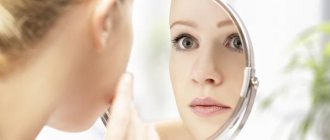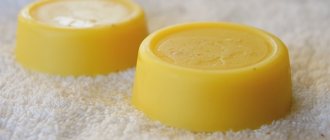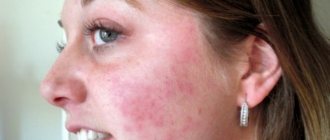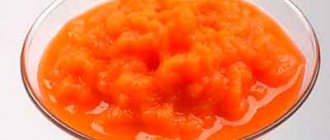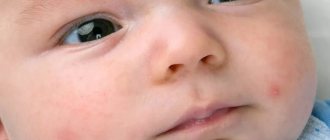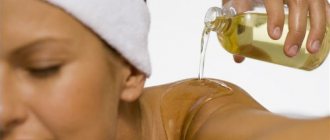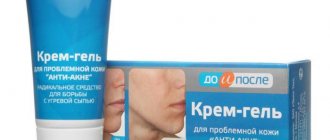Causes of scar formation
Acne marks may appear on the skin as a result of the following situations:
- After squeezing out pimples. Some people rush to get rid of a pimple as quickly as possible, while neglecting the rules of hygiene. After squeezing out a purulent formation with dirty hands, the risk of post-acne increases to 95%, as an infection enters the wound.
- Lack of acne treatment. If you do not pay attention to rashes, this can also lead to the appearance of scars. Therefore, every inflammation on the skin of the face must be treated with special ointments and lotions.
- Passion for aggressive salon procedures. For example, after acne treatment, you should not go to the salon for a chemical peel. Thinning skin will cause acne to take a long time to heal and cause scars to appear.
Other factors can also contribute to the formation of acne scars. These include heredity, bad habits, lack of vitamins and minerals, as well as a passion for tanning.
Removal of scars and acne scars surgically
Scar ointments and cosmetic procedures are not always able to rid the skin of severe relief. Then it remains to resort to the help of a surgeon who will help solve the problem of the formation of serious pathologies that affect large areas of the skin. There are several ways:
- Subsidy or undercutting is performed with a scalpel, the scar is separated from the skin, after which blood and lymph accumulate in the wound. As a result, connective tissue is formed, which is almost invisible.
- Excision involves the removal of the scar by a surgeon, followed by stitches. As a result, a scar is formed that can be removed without a trace using a laser.
- Skin grafting is a radical method in which a piece of skin is transferred from one place to another. This method is used only because of uneven skin due to severe burns or as a result of other operations.
Scar treatment with laser
Before scheduling a laser skin resurfacing procedure, you must obtain approval from a dermatologist. It is also necessary to take into account that in most cases one session will not be enough. You will have to get rid of post-acne in at least 3-4 sessions of laser resurfacing. However, despite the lack of a quick effect, it is this salon procedure that best gets rid of acne scars.
Breaks between sessions should last from 2 to 6 months. The laser carefully and gently removes dead skin cells without leaving any wounds on the skin. After resurfacing, you will have to wait for a rehabilitation period, which lasts about 2 weeks. To make acne scars heal faster, you need to use special creams and ointments recommended by a dermatologist. Laser treatment makes the skin thinner and more sensitive. After the procedure, you should avoid direct sunlight, as pigment spots may appear.
Scar formation
A scar is a consequence of damage to the skin. Skin that has coped with inflammation produces granulation tissue that grows rapidly. Thanks to it, the wound heals, and the inflammation site is filled with collagen fibers and young cells. The process of replacing the top layer of skin, the epidermis, occurs at different speeds depending on the type of damage.
Types of scars
- Normotrophic or physiological scars after acne. They are located at the same level with the epidermis, therefore they are formed flat and light in appearance. Scars, similar in properties to normal skin, arise as a reaction of connective tissue to trauma.
- Atrophic. Acne scars located below the skin level appear inelastic and are characterized by a lack of volume of skin tissue. A weak connective tissue response to injury does not produce enough collagen. It looks like a depression in the skin of different shapes.
- Hypertrophic. The convex shape and dense tissue of scars are formed due to excess collagen, which is not able to dissolve completely. Acne scars appear as a pink hardened layer of connective tissue.
- Keloids. This particular scar tissue is a cosmetic blemish and causes pain. Externally, they are similar to hypertrophic scars.
Acne scars appear if the skin disease is severe. This process is accompanied by damage to the skin and, as a consequence, disruption of the normal restoration of the integument, which leads to the formation of a scar at the site of the inflamed tubercle on the skin.
According to the form they are distinguished:
- chipped;
- cylindrical;
- crater
Chip acne scars are wedge-shaped, and their effect on the tissue is comparable to puncturing something sharp. The only way to eliminate this type of scar is to cut it out.
Cylindrical or rectangular acne scars have a wide top and bottom that extends deep into the skin. Such damage cannot be treated superficially. It is advisable to get rid of this type of scars using a surgical instrument.
Crater-shaped acne scars are the most common type. This is a shallow mark on the skin with gentle edges. They are much wider than they are deep, so they can be corrected in several ways. The surface level of the epidermis is equal to the level below the scar. Therefore, it is possible to improve the appearance using fillers injected under the skin.
Fillers can be permanent or temporary. If the doctor decides on a temporary filler, it will need to be renewed every 3-12 months. Previously, dermabrasion was used to correct crater-type scars; today, laser treatment is used instead, which removes the top layer of skin. After such a procedure, the patient is forced to restore the skin, since the surface looks burned.
All types are characterized by a lack of skin in various forms, formed during destructive inflammation. Unfortunately, external remedies - ointments, creams, gels that could even out acne scars on the face have not yet been invented. Home remedies do not give the desired result because they are not able to compensate for the lack of skin.
Application of chemical peeling
There is another salon procedure that perfectly eliminates acne scars by removing dead cells. However, it is carried out more gently, removing the excess layer of skin with acidic compounds. Chemical peeling is a quick and effective procedure that helps get rid of shallow scars on the skin. Acids have the ability to dissolve the upper layer of the epidermis without damaging its deeper layers.
To achieve the maximum effect from the procedure, you need to do two to three procedures. The length of breaks between sessions depends on the condition of the skin. The thinner it is, the longer it takes to recover. On average, you need from 1 to 3 months off after each session. Chemical peels should not be done in the spring and summer, as sun exposure increases during the warmer months. Before agreeing to the procedure, you must do a test for an allergic reaction.
Skin regeneration and its features
Skin cells, like other tissues of the human body, are in constant renewal. Millions of them, having outlived their life, die off every day, at the same time, new, young cells are formed and replaced in the germ layer. This process is called regeneration. Scientists have calculated that the total weight of skin cells renewed over a person’s entire life is on average 18 kg.
The skin has a layered structure. Its outer, keratinizing layer - the epidermis - is completely renewed within 2-3 weeks, the deeper layers - germinal, vascular - require a month or more.
We are talking about physiological recovery. If damage or a rash occurs on the skin - acne, furunculosis, then this process proceeds more slowly. Moreover, if the lesion is superficial, within the epidermis, it heals without leaving marks. A deep pathological process affecting the germ layer, vascular, affecting the sebaceous and sweat glands, hair follicles, as a rule, leaves traces in the form of pigment spots, scars, and sometimes disfiguring. In addition, the following reasons slow down regeneration:
- stressful situations;
- overwork, poor sleep;
- poor nutrition;
- hormonal imbalance;
- various abuses (alcohol, smoking, drugs);
This problem is most relevant for the facial skin of young people suffering from various types of rashes that arise under the influence of the listed reasons.
Mesotherapy for scars
This method of removing acne scars is performed using an injection method. The main active ingredient is hyaluronic acid. It is possible to use other components, but they are selected depending on the skin type and the purpose of the procedure. To eliminate scars on the face that appear after acne, the use of hyaluronic acid is suitable. The result after mesotherapy appears after two to three days. Unfortunately, the effect of the procedure lasts no more than six months. To maintain the skin in perfect condition, you need to periodically inject the scar area.
A course of mesotherapy to get rid of acne scars consists of 5-15 sessions. It all depends on the depth of the scars and their number. After each session, the skin is restored within a few days. This method is one of the most gentle in the fight for even and smooth skin, but its main disadvantage in the form of short-term results forces us to look for more effective ways to remove scars.
Treatments to help get rid of acne
The type of procedures prescribed depends on the exact consequences of acne that concern the patient.
Superficial and medium-deep peels can remove the effects of acne in the form of small scars and spots.
To correct deep scars, you may need to prescribe:
- microdermabrasion,
- microneedling,
- fractional laser,
- TCA peels,
- TCA cross,
- autofibroblasts,
- rotational dermabrasion procedures,
- fillers,
- subsidies, etc.
Additionally, the use of anti-scar creams and gels may be indicated.
For reference. To stimulate the skin's ability to regenerate, restore it, provide deep hydration and smooth its structure, redermalization can be performed.
Acne spots can be eliminated with massages, whitening creams and masks.
Creams with retinoids are used both to treat the active inflammatory process of acne and to eliminate post-acne formations.
For reference. Retinoids help smooth out skin texture, eliminate hyperpigmentation, hypopigmentation and congestive spots, and also stimulate the skin's ability to regenerate.
In addition to the main procedures, it is recommended to take multivitamin preparations, as well as supplements with hyaluronic acid and collagen.
Collagen and hyaluronic acid preparations
For reference. Collagen is the name given to structural (fibrillar) proteins that form the basis of the connective tissues of the body. Collagen is responsible for the structure of tendons, skin, bones, and cartilage.
In addition, collagen is responsible for ensuring their elasticity and strength, maintains the smoothness and elasticity of the skin, helps slow down the aging process, increases blood flow to the muscles and dermis, and ensures complete tissue regeneration.
Injectable collagen is highly effective, but it is an expensive procedure. In this regard, drinking collagen has become very popular.
It should be noted that after twenty years, collagen production decreases, so many patients use drinking collagen to reduce the severity of wrinkles.
Modern preparations of drinking collagen are divided into fish and animal.
Attention! Plant collagen does not exist, since this substance is not found in plants.
In this regard, all plant collagen preparations are purely a marketing ploy and have no effectiveness.
The natural production of collagen in the body is facilitated by the consumption of meat products, fish, omega 3 fatty acids, fish oil, greens, fruits, berries, supplements with sulfur, vitamin C, zinc and magnesium.
To improve the effectiveness of drinking collagen, it is recommended to combine it with hyaluronic acid.
For reference. Hyaluronic acid is the name given to glycosaminoglycan molecules, which are the most important structural component of human skin. The main function of hyaluronic acid is to retain moisture, fill intercellular spaces and protect cells from damage.
Hyaluronic acid also normalizes blood circulation in the dermis and the functioning of the sebaceous glands, helps smooth the skin texture and improve its tone, improves complexion, and improves the ability of tissues to regenerate.
Treatment with creams and ointments
Knowing how to remove acne scars with pharmaceutical products, you can do it yourself. To enhance their effect, the skin is nourished with masks according to folk recipes. Before applying pharmaceutical ointment or cream to your skin, you should carefully read the instructions for use. Not every product can be used daily or before going outside. The most popular drugs for scars on the face after acne are:
- "Kontraktubeks". The gel promotes the resorption of small scars. It is also used as a preventive measure against their occurrence. The gel has an intense anti-inflammatory effect and is suitable for use on skin inflamed by acne. To even out your face after acne, you need to use it 3 to 4 times a day. "Kontraktubeks" is suitable for use on children's skin. Pregnant women must obtain a doctor's permission before use.
- "Kelo-cat." This gel has a silicone base and thanks to it it perfectly smoothes scars and scars. It covers the top layer of the skin with a light film that protects and heals it. You only need to use Kelo-Kot once a day. The course of treatment usually lasts up to 3 months. After this period of time, all shallow post-acne levels out and become invisible. Before using the gel, you must study the instructions and also do a skin sensitivity test to the components in its composition. You may be allergic to the drug. "Kelo-kot" is prohibited from being applied to the skin during pregnancy and breastfeeding.
- "Zeraderm Ultra". This effective gel is used in the treatment of acne scars, sun and thermal burns, as well as surgical interventions. It can be used immediately after the stitches have been removed. Zeraderm Ultra also has the ability to restore skin after laser resurfacing and many other traumatic procedures. It is actively used in dermatology in the treatment of acne, inflammation caused by infections, and also as a healing agent after chickenpox. The gel is applied to the affected areas of the skin pointwise and up to 2 times a day. The course of treatment should be continued from 3 weeks to six months. Its duration depends on the depth of the scars.
- "Fermenkol". When thinking about how to remove white scars after acne, it is worth remembering exactly this remedy. The gel has a strong anti-scar effect. It effectively corrects acne scars, burns, and surgical marks. "Fermenkol" not only smoothes and restores the epidermis, but also has an analgesic effect. The gel relieves itching and redness on the skin. Post-acne is treated by applying the medicine twice a day for a month. If the scars have not completely disappeared, you need to repeat the course after two weeks. Fermenkol should not be used on open wounds, or during pregnancy.
- "Imoferase". The drug consists of the active substance hyaluronidase and is intended to restore the skin. Dermatologists prescribe it to eliminate scars and scars. It needs to be applied twice a day. After a course of treatment for 8 weeks, the skin is significantly evened out and smoothed. The scars become almost invisible. Reviews of “Imoferase” for acne scars indicate that the drug really works. The main thing is to start using it immediately after the scar forms.
Timely treatment with ointments and gels for scars is very important. Old scars will be much more difficult to respond to drugs than new ones. Therefore, knowing how to get rid of acne scars, you must immediately begin using medications on your own.
How to get rid of post-acne
The causes of scar formation can be:
- squeezing out blackheads and pimples is the most common and common mistake of both teenagers and adults;
- advanced acne – lack of treatment or incorrect therapy;
- fungus.
It is difficult to remove brown or bluish stains, but they fade on their own over time. As for scars, a more systemic and serious intervention is required.
Review of ointments for fighting scars
It is not always necessary to contact a surgeon to remove unaesthetic formations that arise after acne. In many cases, you can get rid of the problem or minimize it with the help of pharmaceutical ointments, which are available for purchase at any pharmacy. The most effective drugs:
- Contractubex . The ointment contains ingredients that accelerate the exfoliation of the dermis and stop the proliferation of connective tissue cells. It works more effectively with normotrophic scarring. Recommended for use for preventive purposes when there is a predisposition to the formation of hypertrophic and keloid scars. Apply locally, rub into scars twice a day. The standard course of therapy takes 30 days. Continue treatment after consulting a doctor.
- Fermenkol . Contains enzymes of animal origin that normalize their digestive system. The components break down collagen fibers, preventing the formation of connective tissue. The drug is used more often in physiotherapy, in particular, it is effective in electrophoresis. Use exclusively as prescribed by the doctor, who also determines the number of ointment applications and the duration of the course of therapy.
- Dermatix . Therapeutic ointment is recommended for patients who already have scars and there is a risk of their transformation into keloid or hypertrophied scars. After application to the problem area, a film is formed that protects the defect from external influences. Apply in a thin layer every morning. It will not be able to get rid of complex scars, but it will prevent their further development and the formation of new ones.
- Salicylic, zinc and syntomycin ointments . All three compositions are united by an affordable price and high efficiency. With regular use, the epidermis exfoliates well, metabolic processes in the skin return to normal, and the dermis brightens. Pharmaceuticals work comprehensively and can eliminate post-acne. Apply twice a day to problem areas with a thick ball, rinse with warm water after 50-60 minutes. The course of treatment can be continued until the desired result is achieved.
Cosmetic procedures to treat the effects of acne
It is often difficult to smooth out acne scars with ointments alone, so you have to use cosmetic procedures.
Mesotherapy
Injections of hyaluronic acid and collagen are injected under the skin. This accelerates intracellular metabolism. A cocktail containing bioactive components fills scars, thereby smoothing the skin. As a result of the procedure, blood circulation improves and the face becomes healthier from the inside.
It is worth noting that the procedure is effective and gives a relatively quick result, but it may not last long.
Peeling
Peeling can be considered one of the most effective methods for eliminating post-acne. For such purposes, deep phenolic and intermediate chemical types are recommended:
- Deep phenol peeling . The session is painful and very aggressive. Phenol works not only on the surface layers of the skin, but also on the inner, deep ones. Only one procedure is required to obtain a clear result. The post-procedure rehabilitation period takes about two weeks. It is important to protect the skin from ultraviolet radiation and not to sunbathe in the sun, as there is a high risk of pigmentation.
- Medium chemical peeling . The process uses glycolic, salicylic or trichloroacetic acid. The components exfoliate well the skin that has suffered pathological changes. At the same time, the regenerative properties of the body are stimulated, due to which the connective tissue replaces the healthy epidermis. About 5 procedures (or more) are required at intervals of 10-14 days.
Laser resurfacing
Treatment of problem areas with a laser beam, as a result of which the upper layers of the dermis evaporate, the skin is smoothed, and scars become less noticeable. Laser treatment on the face and back after acne is completely painless, since the cosmetologist first applies an anesthetic cream. Session duration is 30 minutes. The duration of the course is determined individually for each case. More details in the video:
Mechanical dermabrasion
During the procedure, special rotating brushes are used to polish and abrade the surface layers of the skin. As a result, scar tissue becomes almost invisible.
The session is painful, so anesthesia is required. Anesthetic creams or freezing preparations are used. The duration of the manipulation is about an hour. At the end, the face is treated with an antiseptic. The crust formed after the procedure goes away on its own after a week.
Experts believe that to achieve a full effect, it is necessary to carry out treatment through mechanical dermabrasion at least three times, at intervals of one month.
The technique has contraindications:
- tendency to form keloid scars;
- epilepsy;
- pustules on the dermis;
- somatic diseases;
- herpes.
Ozone therapy
Medical ozone is injected locally under the skin. Allows you to reduce inflammation and speed up wound healing. A course of 5-10 procedures is required, as well as further correction as necessary.
Fractional photothermolysis
The difference between this laser procedure and others is that the skin is treated not with one point beam, but with scattering faces. It solves the problem of not only scars, but also other manifestations of post-acne - pigmentation, enlarged pores.
Most often, the course consists of five sessions with an interval of ten days. The rehabilitation period is three days.
Surgical methods for removing scars and scars
Surgical intervention is necessary in rare cases when other methods of combating post-acne do not give the desired result, or in case of serious pathologies affecting large areas of the skin.
Surgeons offer three main options for getting rid of scars:
- Subsidy (cutting). During the operation, the formed scar is separated from the skin with a scalpel. Blood and lymph accumulate in the wound, which form connective tissue - almost invisible. Undercutting is often combined with laser resurfacing to achieve the best possible result.
- Excision . The scar is excised by the surgeon, then stitches are applied. New scars usually form in the affected area, but they are removed by the laser without leaving a trace.
- Skin grafting . The method is radical. It involves transplanting skin from one area to another. This method is used in cases of severe burns and other situations where such complex intervention is extremely necessary.
Traditional medicine recipes in the fight against post-acne
For mild scarring, you can treat it with folk remedies at home. This method requires time and patience, but in some cases it is quite effective.
- Egg white and lemon juice. Combine lemon juice (20 ml) and egg white. Apply to problem areas of the face and leave overnight. In the morning, wash with warm water.
- Potato juice. Grate the potatoes on a fine grater, spread the resulting pulp over your face and leave for 30 minutes. For convenience, use gauze. The juice of the root vegetable removes dead skin cells and activates the formation of new tissue. It is also a natural antiseptic and promotes wound healing and discoloration of pigmentation.
- Avocado. Apply the pulp to the skin and leave for 20 minutes. Recommended for dry skin types.
- Aloe juice. Apply to scars and leave for 10 minutes, rinse with plain water. Apply every day.
- Apple vinegar. Mix a couple of drops of the composition with a teaspoon of filtered or mineral water. Apply to scars, rinse after 5-7 minutes.
- Cottage cheese. Use as a compress and leave for one hour. Rinse off with water. Suitable for dry and sensitive dermis.
- Ice. You can freeze not just water, but a herbal decoction (for example, chamomile). Wrap ice cubes in a cloth and wipe your face.
Traditional methods of treatment
In addition to pharmaceutical products, it is necessary to make homemade masks to eliminate scars. They should be applied in the same way as medications - exclusively to the affected areas of the skin. Masks will help lighten scars and make them even and smooth. The following mixtures are considered the most effective:
- Lemon mask. To prepare it, you need to mix the pulp of half the fruit and add a large spoonful of rich sour cream to it. Next, homemade ointment for acne scars is whipped in a blender and applied to the scars in a thick layer. You can keep this mask for no more than 15 minutes. To see the effect, it should be done daily.
- Homemade cream. You will need sandalwood powder and rose water. Add two small spoons of powder to a shallow container and add rose water to it to make a thick paste. Apply the mask to areas with scars and leave to act overnight.
- Oatmeal mask. To prepare it, you need to mix yogurt without additives, full-fat sour cream and oatmeal flour in equal proportions. To treat the skin on your face you will need 1 tablespoon of each product. After stirring the mask until smooth, you need to add a teaspoon of freshly squeezed lemon juice to it. Applying the finished product is allowed only to scars and scars, avoiding healthy areas of the skin. Keep the mask on for 20 to 30 minutes. You can do it every other day.
- Soda mask. The simplest mask recipe includes only baking soda and water. To prepare, you just need to mix soda and boiled water in equal proportions. Then you should apply the paste to the scars and hold for about 20 minutes, being in a horizontal position. After this, the mixture should be rubbed a little into the skin and rinsed off.
In order for folk remedies to remove acne scars to give good results, they must be used constantly. You should not apply such masks to skin with an open wound.
Acne treatment with laser device
Acne treatment is carried out with infrared or ultraviolet radiation. To carry out procedures at the DasKlinik cosmetology center, American-made BISON More-Xel CO2 and Italian RENEW FACE&BODY are used. The capabilities of modern devices allow fine tuning for each specific case, selecting a mode.
Minor defects are treated using ultraviolet waves up to 420 nm, with a penetration depth of up to 0.15 mm. The result is a lasting antibacterial effect. BISON More-Xel is used to smooth the skin, remove scars, scars remaining after ulceration of the contents of pustules.
Deep effects are carried out using thermal rays of the infrared spectrum on an Italian device. Penetration of radiation to a depth of 4 mm allows you to renew the outer layers of the epidermis, obtaining the following positive results:
- complete cleansing of all layers of the skin from foci of inflammation;
- normalization of the activity of the sebaceous glands;
- stimulation of blood circulation and metabolism in skin tissues.
The choice of treatment regimen, the number and frequency of procedures are determined by the clinic specialist according to indications, individually for each patient.
Recommendations from dermatologists and prevention of scars
To know how to deal with post-acne and prevent its occurrence, you need to know everything about the causes and risk factors of this problem. First of all, it is very important to remember that you should not violate the integrity of the skin if you have acne or inflammation. Dermatologists recommend paying attention to the following situations:
- Formation of painful nodules and cysts. This is the name for hard and dense pimples on the skin with a clear inflammatory process inside. Cysts are always painful and consist of pus. They are located very deep in the skin, so they almost always leave behind scars. To prevent scarring, do not squeeze such pimples.
- Acne in adolescence. Doctors assure that adults ignoring this problem can lead to serious consequences. Over the years, the inflammatory process gains momentum and develops into a severe form. Therefore, it is necessary to begin acne treatment as early as possible and reduce the risk of scarring to a minimum.
- Heredity. Blood connections can also cause the formation of acne and post-acne. In this case, experts recommend leading a healthy lifestyle and carefully caring for your skin so as not to provoke a genetic predisposition.
Prevention of scars and acne scars consists of several of the most important steps that anyone who cares about the condition of their skin should follow.
Caring for problem skin
During the consultation, a dermatologist prescribes external care to treat acne. This could be Skinoren, Differin, Baziron or another drug that is used for at least three months. It must be combined with medicinal cosmetics for your skin type.
Incorrectly selected care increases treatment time. What suits your friend may not suit you or cause allergies due to individual intolerance. I bought creams on the advice of friends and advertisements, but my face only got worse.
Dermatologists and cosmetologists recommend using medicinal or professional cosmetics. Medicinal cosmetics are sold in pharmacies and undergo international clinical trials; higher safety requirements are applied to them. These cosmetics are produced in our own laboratories, which have advanced technologies and a research base. Examples of brands: La Roche-Posay, Avene, Uriage, Bioderma, Vichy.
A cosmetologist-dermatologist can select professional skin care products. Examples of brands: Holy Land, Christina, Sweet Skin, SkinCeuticals.
There are different types of post-acne: scars, spots, pigment. And everyone needs their own approach. You can deal with them at home using professional cosmetics, which the doctor will select, or through carbon peeling, plasma lifting, photo- and neodymium rejuvenation, laser resurfacing in the clinic.
In 50% of cases, basic skin care helps fight acne on the face, which most women simply do not have enough time for. Therefore, first, address this issue. Take note of the basic rules that will help rid the epidermis of inflammation.
- It is mandatory to cleanse the face from acne at home using a steam bath with herbs (preferably anti-inflammatory: chamomile, calendula, celandine or St. John's wort). After this, use gentle scrubs. This procedure should be regular: use it at least once a week, and even twice in case of severe inflammation.
- To care for problem skin and remove acne, you need to use one line of cosmetics: cream, mask, scrub, lotion, serum, tonic - everything you use should be developed by one company specifically to combat rashes.
- Many people ask whether it is possible to squeeze out acne on the face at home: dermatologists unanimously prohibit this, because most often in such situations an infection occurs due to failure to comply with basic hygiene rules. If the temptation is too great and you just can’t refuse this dubious and dangerous procedure, take care of sterility: treat acne and hands with medical alcohol before and after.
- You will also have to find out what the diet for facial acne is. It involves giving up fatty, salty, pickled, smoked, spicy, fried, carbonated, and alcoholic foods. You will have to eat plenty of fruits, herbs, vegetables, berries and nuts for some time. Meat and fish should be steamed, boiled or baked in the oven.
As soon as you find the strength to start fully caring for your facial skin, it is recommended to carry out therapy at the same time. Only a dermatologist can recommend the best remedy for acne on the face.
It is not recommended to search pharmacies on your own, because it is difficult to find a really good drug that will not lead to side effects and complications.
Interesting facts. Daniel Radcliffe is a famous actor who played the famous Harry Potter. He had to film during his teenage years, and he was simply tormented by juvenile acne. To disguise them, makeup artists had to apply a thick layer of makeup to his skin.
Sun protection
This most important stage involves a healthy attitude towards tanning and ignoring the solarium. Only a moderate amount of sun has a positive effect on the body and fills it with vitamin D. Excessive tanning is very harmful to the skin of the face and body. If you have acne, ultraviolet radiation can cause scars that cannot be treated even with laser resurfacing.
Also, exposure to the sun increases the risk of developing age spots. They first form in the deep layers of the skin and then appear on its surface. To protect your skin from the harmful effects of ultraviolet rays, you should always use high factor sunscreen.
Recipes for masks to combat post-acne
Potato juice
To prepare this mask, grate a potato on a fine grater, then spread the paste over your face and leave for 30 minutes. You can put gauze on top for convenience. As a result, the skin will become smooth and pigmentation will fade.
Aloe juice
Aloe juice. It is recommended to rub aloe juice into the scars daily and leave it on the skin for 10 minutes and then rinse off.
Apple vinegar
Apple vinegar. For this mask, mix 2 drops of vinegar with 1 tsp. mineral or purified water. Then apply to scars and wash off after 5-7 minutes.
There are many ways to solve problems associated with post-acne. But it is worth considering that old scars are much more difficult to remove. Seek help from a specialist in a timely manner. Then you are guaranteed smooth and beautiful skin.
Author: Sagitova Patimat Plastic surgeon, maxillofacial surgeon, cosmetologist Chief physician of the cosmetology department of the Lux Clinic. Specialist in laser and hardware rejuvenation methods. Participant of international medical congresses and conferences.
Using the right cosmetics
Some decorative and caring cosmetics contribute to the deterioration of skin quality. It can also have a bad effect on existing inflammation, thereby increasing the risk of scars. To prevent negative consequences, it is necessary to select cosmetics that do not contain toxins, dyes and parabens. These substances cause irritation and inflammation on the skin, and also severely clog pores. Ingredients such as butyl, propyl, E129, E102, E143, E133 parabens are especially toxic.
Dermatologists do not recommend applying decorative cosmetics immediately after washing. For the first half hour, the skin will absorb everything to replenish moisture reserves that were depleted after a night's sleep. If you immediately apply foundation to your face, it will clog your pores and cause acne.
Healthy lifestyle
To prevent the appearance of post-acne, you need to make sure that there is no acne on your face. And its absence ensures a healthy lifestyle. First of all, you need to give up bad habits. Smoking and drinking alcohol are bad for your skin. It is also very important to get good sleep. It is during sleep that the most collagen is produced, and cells are actively restored. It is necessary to sleep in darkness and silence. The air temperature should be about 18-20 degrees.
Don't forget the importance of proper nutrition. The foods you eat affect not only your health, but also the appearance of your skin. To keep it elastic, smooth and quickly restored, you need to consume foods containing vitamins A, C, E and zinc. It is also necessary to drink at least 1.5 liters of clean water daily. A healthy lifestyle combined with proper care and regular physical activity will have a beneficial effect on the condition of the skin and prevent the appearance of post-acne.
